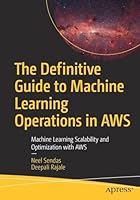
The IFPUG Guide to IT and Software Measurement
- Length: 848 pages
- Edition: 1
- Language: English
- Publisher: Auerbach Publications
- Publication Date: 2012-04-25
- ISBN-10: 1439869308
- ISBN-13: 9781439869307
- Sales Rank: #4302992 (See Top 100 Books)
The widespread deployment of millions of current and emerging software applications has placed software economic studies among the most critical of any form of business analysis. Unfortunately, a lack of an integrated suite of metrics makes software economic analysis extremely difficult.
The International Function Point Users Group (IFPUG), a nonprofit and member-governed organization, has become the recognized leader in promoting the effective management of application software development and maintenance activities. The IFPUG Guide to IT and Software Measurement brings together 52 leading software measurement experts from 13 different countries who share their insights and expertise. Covering measurement programs, function points in measurement, new technologies, and metrics analysis, this volume:
- Illustrates software measurement’s role in new and emerging technologies
- Addresses the impact of agile development on software measurement
- Presents measurement as a powerful tool for auditing and accountability
- Includes metrics for the CIO
Edited by IFPUG’s Management and Reporting Committee, the text is useful for IT project managers, process improvement specialists, measurement professionals, and business professionals who need to interact with IT professionals and participate in IT decision-making. It includes coverage of cloud computing, agile development, quantitative project management, process improvement, measurement as a tool in accountability, project ROI measurement, metrics for the CIO, value stream mapping, and benchmarking.
Table of Contents
Section I: Insights from the Experts: Introduction
Chapter 1. A Proposed Suite of Thirteen Functional Metrics for Economic Analysis
Chapter 2. A Guide to Sizing and Estimating Projects using International Function Point Users Group Function Points
Section II: Benchmarking: Introduction
Chapter 3. Acquiring external Benchmark Data
Chapter 4. Effective Applications Development and Maintenance and Support Benchmarking
Chapter 5. Benchmarking techniques and Their Applications in IT and Software Measurement
Section III: Estimation: Introduction
Chapter 6. Effort Estimation for Software Projects
Chapter 7. Software and Web Effort Estimation via Predictive and Diagnostic Reasoning
Chapter 8. An Experience in Estimating Software Testing Effort
Chapter 9. Producing Reliable Estimates through Quantitative Uncertainty Assessment
Chapter 10. Optimism in Cost Estimation
Section IV: Function Points: Introduction
Chapter 11. The 13 Mistakes of Function Point Counting
Chapter 12. Facilitating Function Point Counts: How to ask the “Right” Questions and Get the “Right” answers for an accurate Count in an Efficient Manner
Section V: Measurement Programs: Introduction
Chapter 13. Measurement of Business Intelligence
Chapter 14. Case Studies in Measurement-Based Decision Making
Chapter 15. Measurement and Motivation
Chapter 16. Achieving Business Objectives: Building a Software Metrics Support Structure
Section VI: Metrics for the Cio—Business Value: Introduction
Chapter 17. Maximizing value: Understanding Metrics Paradoxes through Use of Transformation
Chapter 18. Objective-Driven Process Improvement: Connecting Improvement with Business Objectives
Chapter 19. A Framework for Implementing an Effective Software Development and Maintenance Metrics Program
Chapter 20. Deriving Business Value Measures for Business Initiatives
Section VII: New Technologies And Environments: Introduction
Chapter 21. Enterprise Resource Planning (ERP) Function Point Analysis: A Possible Approach and a Practical Experience
Chapter 22. Mobile Applications, Functional Analysis, and the customer experience
Chapter 23. loud Computing Solution Measurement
Section VIII: non-functional and agile: Introduction
Chapter 24. Software Measurement and Agile Development
Chapter 25. Agile Estimation Using Functional Metrics
Chapter 26. Software Non-Functional assessment Process
Section IX: Outsourcing: Introduction
Chapter 27. SOS—Application Quality Issues!
Chapter 28. Software Measurement and Service Levels
Chapter 29. Software Measurement in Procurement Contracts
Chapter 30. Request for Proposal Management: Answering Metrics-Based Bids
Section X: Process Improvement: Introduction
Chapter 31. Software Measurements: Effective utilization of Software Testing Measurements
Chapter 32. A Framework to Implement Statistical Process Control
Chapter 33. Human Performance Improvement: Measuring the Real Change of Process Improvement
Chapter 34. Understanding your Organization’s Best Software Development Practices
Chapter 35. Process Improvement
Chapter 36. Defects: Perspective on Prevalence and Prevention
Section XI: Productivity: Introduction
Chapter 37. How to Improve your Development Process Using the Indicator of Productivity
Chapter 38. Monitoring Productivity using Function Points in Various Phases
Section XII: Project Management: Introduction
Chapter 39. Project Management and Measurement: What Relationship?
Chapter 40. Project Scope Management with Function Points: Achieving Olympic Success on Software Intensive Projects with Scope Management
Chapter 41. Scope Management Technique Using Sizing Process
Chapter 42. Quantitative Project Management—Measurement-Based Techniques for Managing Scope
Chapter 43. Requirements: Building a Solid Foundation for a Successful Project







